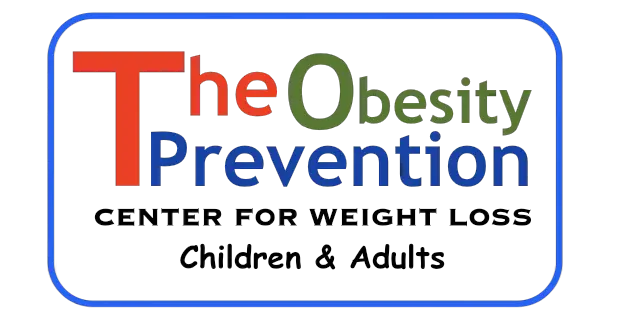Understanding the Role of Mindful Tracking in Weight Loss Journeys
Losing weight and keeping it off long-term is one of the most challenging feats for many individuals. However, mindful tracking of food intake can provide key insights to illuminate your weight loss journey. Monitoring what, when, why, and how much you eat grants awareness into habits and patterns that may be hindering your progress. Equipped with tracking-derived knowledge, you can make empowered adjustments to optimize your diet and lifestyle for successful, sustainable weight management. This article will explore six insightful lessons that mindful tracking can unveil to propel your fitness objectives.

The Power of Mindful Food Tracking
Defining Mindful Tracking and Its Benefits
Mindful tracking simply involves carefully recording details about your food and beverage intake. This includes specifics like portions, calories, macronutrients, meal timing, triggers, and contextual factors. Tracking mindfully means doing so with self-compassion, non-judgment, and a growth mindset. It allows you to cultivate a constructive relationship with food and your body. Research shows mindfulness is linked to less impulsive eating, reduced caloric intake, and higher fruit/vegetable consumption. Tracking facilitates self-awareness and introspection to illuminate areas for improvement.
Developing a Positive Relationship with Food
Avoid viewing tracking as punishing or restraining. Instead approach it from a paradigm of conscious caring for your health and well-being. Tracking grants the knowledge to make satisfying choices that nourish you, within your unique needs and preferences. It helps redirect from reactive habits to empowered decision-making. Tracking with self-love and positivity makes the process more easeful and sustainable. Come from a place of curiosity to explore patterns and find solutions.
Getting Started with Mindful Tracking
Choosing the Right Tracking Method for You
Select a tracking method that feels the most practical and seamless for your lifestyle. Options include food journaling, apps (MyFitnessPal, LoseIt, Cronometer), smart watches, point systems, or photo logging. There are even bullet journals devoted to artistic and reflective tracking. Find what resonates best for consistency. Simplicity is key.
Setting Realistic Goals for Tracking
Be intentional but realistic with your tracking goals. Logging the entirety of your intake daily can be demanding. Start with tracking just main meals. Or target consistency such as 5 days a week. Build up goal setting as it becomes more innate. Staying flexible helps tracking feel sustainable rather than rigid. Be mindfully in tune with what feels right for each season.

Insight 1: Caloric Intake Awareness
Why Knowing Your Daily Caloric Intake Matters
Awareness of approximate daily caloric intake is foundational. The basic principle of weight loss relies on a caloric deficit, burning more calories than consumed. Tracking intake allows you to ensure your deficit aligns with weight loss objectives. It also prevents drastically slashing calories, which backfires by decreasing metabolism. Mindful tracking provides calorie consciousness, so cutting becomes an informed process.
Identifying Hidden Calories and Portion Distortion
The average individual underestimates caloric intake by 25%. Tracking illuminates “hidden” calories from incidental grazing, dressings, cooking oils, and beverages. Becoming aware of unconscious eating habits allows them to be addressed constructively. Tracking also highlights where portion distortion is occurring, revealing our perception of serving sizes is often skewed. This calorie literacy transforms choices.
Insight 2: Nutrient Balancing and Micronutrients
Prioritizing Nutrient-Dense Foods for Weight Loss
Calories provide part of the picture, but nutrition quality matters immensely. Tracking macros reveals if protein, carbs, fat, and fiber are adequately balanced for satiation. Are vitamin-rich vegetables prominent or an afterthought? Tracking nudges us toward more fruits, greens, lean proteins, whole grains and away from empty calories. This leaves us satisfied on fewer calories and less likely to overeat.
Ensuring Adequate Micronutrient Intake
Hunger pangs may signal inadequate micronutrient consumption. Tracking apps allow inputting vitamins, revealing if nutrients like magnesium or potassium need attention. Deficits can stem from restrictive eating or lack of nutrition diversity. Being mindful of micronutrients ensures cravings stem from physiological hunger versus nutritional inadequacies.

Insight 3: Emotional Eating Patterns
Recognizing Triggers for Emotional Eating
Beyond physical hunger, emotions powerfully influence eating habits. Tracking prompts logging contextual details like mood, location, social setting. This consciousness reveals emotional eating triggers like stress, boredom, fatigue or family visits. Awareness of emotional eating catalysts allows them to be managed constructively before they undermine intentions.
Using Tracking to Address Emotional Eating Habits
When an emotional trigger is spotted via tracking, you can pause and reflect. What is the real need beneath the urge to emotionally eat? Track feelings alongside food. Perhaps go for a walk or call a friend instead. Over time, tracking equips you to meet your authentic needs without emotional eating overrides. New empowered habits blossom.
Insight 4: Meal Timing and Frequency
Impact of Meal Timing on Metabolism and Satiety
When you eat matters immensely alongside what you eat. Tracking unveils how meal timing impacts hunger, cravings and energy. For many, a bigger breakfast curbs overeating later in the day. Some do best spacing meals 3-4 hours apart. Experiment and track outcomes. Remember, grazing can undermine satiety from structured meals. Find optimal timing via tracking.
Optimizing Meal Frequency for Weight Loss
Tracking meal number and their spacing highlights if more frequent meals enhance satiety and portion control. Or perhaps a condensed eating window like intermittent fasting works best for your body. If extended fasts feel depriving, a tracked food journal would reveal that. There is no universally ideal meal frequency; tracking uncovers your sweet spot.
Insight 5: Progress Evaluation and Plateaus
Tracking Trends and Patterns in Your Weight Loss
Daily weigh-ins provide data to evaluate weight loss progress. But the scale only tells part of the story. Tracking measurements and body fat % illuminates progress where the scale stalls. You may spot monthly patterns where weight temporarily plateaus. Awareness of these trends prevents discouragement. Tracking grants a bigger-picture perspective to stay motivated.
Overcoming Plateaus with Mindful Adjustments
Plateaus are inevitable, but tracking informs wise recalibration. Has meal timing shifted? Are new workout patterns depleting glycogen and retaining water? Tracking pinpoints potential plateau culprits for mindful troubleshooting. Patience and perseverance are key. With data tracking illuminating patterns, plateaus become purposeful progress incubation periods rather than defeats.

Insight 6: Mind-Body Connection and Satisfaction
Mindful Eating’s Role in Enhancing Satisfaction
Tracking prompts us to eat slowly and tune inward, enhancing enjoyment and curbing overeating. It reveals how your body feels before, during and after meals. Do certain foods energize or fatigue you? Tracking helps identify satisfying foods to feel nourished without stuffed discomfort. Mindful eating boosts the benefits derived from each calorie.
Building a Sustainable Relationship with Food
Ultimately, mindful tracking allows you to build an empowered and sustainable relationship with food. Tracking insights enable you to meet health goals while honoring innate hunger wisdom. You can indulge desires consciously not compulsively. Food becomes an ally not adversary. This mentality shift is essential for lifelong healthy eating habits.
Wrapping Up
Embracing Mindful Tracking as a Lifelong Tool
Approach tracking as a lifelong practice, not a short-term fix. The insights gleaned will evolve over seasons of life and changing needs. Tracking grants an intimate understanding of your unique body and appetite. With this knowledge, you are equipped to adaptably eat in a way that is intentional yet joyful. A mindful tracking practice cultivates profound body wisdom to carry you through a lifetime.
Celebrating Small Wins and Non-Scale Victories
On your path remember that progress rarely follows a linear trajectory. Celebrate small wins and non-scale victories, from passing on seconds to consistent hydration. Invest in the process. With patience and loving perseverance, the lasting insights illuminated through mindful tracking will become innate wisdom to intuitively nourish yourself in the most holistic way possible.
Sign up for our free newsletter to receive regular updates on food, nutrition, health, wellness, and weight loss. Stay informed and motivated on your journey to a healthier you.
Explore additional articles on our website that delve into various aspects of food, nutrition, health, wellness, and effective weight loss strategies. Gain insights and practical tips to support your holistic well-being.
Thank you for reading this post, don't forget to subscribe to our free newsletter
!
